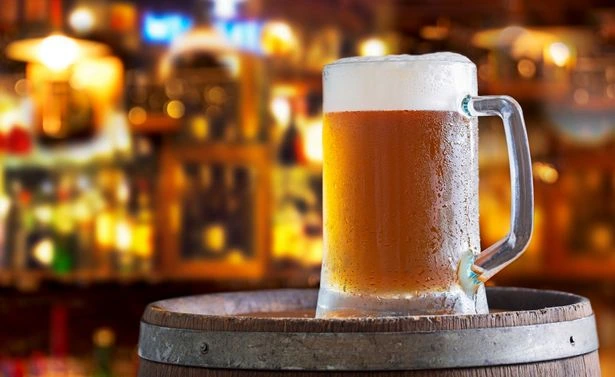As temperatures climb toward summer highs, nothing refreshes quite like a cold drink — whether it’s a chilled beer in a garden, a white spritzer in a sidewalk café, or a can of cola by the pool. The consensus seems universal: drinks must be cold. Otherwise, why bother? And yet, when it comes to the so-called “right” temperature for serving beverages, debates can quickly heat up. Online forums and real-life conversations alike turn passionate. Some even prefer drinking warm water — and no, we’re not talking about tea.
So what’s the deal with room-temperature red wine and ice-cold beer? And why does this question stir up such intense opinions?
According to Der Standard, it all comes down to cultural habits, outdated standards, and a bit of marketing dogma.
A Tradition from the 1970s: Universal Serving Rules
Beer expert Conrad Seidl believes it all began in the 1970s, when conversations around proper beverage temperatures took off. “Back then, people kept repeating this general rule: beer should be served at 6°C, white wine at 12°C, and red wine at 18°C,” he recalls. The simplicity of this standard quickly made it widespread and widely accepted — no matter the actual character of the drink.
Today, Seidl explains, the picture is more nuanced: “We now pay more attention to the individual properties of each beverage.”
The Colder, the Less Flavor?
If a beer is inherently mild in flavor — Seidl mentions Heineken and Bud Light — or if the goal is to avoid strong taste altogether, then sure, serve it ice-cold at 4°C. But stronger beers with intense malt or bitter notes, he argues, deserve to be served warmer — over 10°C — to truly open up.
In fact, at professional tastings, beer is typically served warmer to help uncover subtle aromas that emerge only after the drink has sat at room temperature for a while. Yet many people still cling to outdated temperature grids that are at best rough guidelines today.
The Room-Temperature Red Wine Myth
Sommelier Suvad Zlatic is quick to challenge one of the most stubborn clichés: red wine served at “room temperature.” That advice, he says, originates from an era when homes were cooler — no triple-glazed windows or indoor heating keeping spaces at a cozy 22–25°C.
“Today’s room temperature actually harms the wine,” Zlatic explains. “Red wines can start to smell boozy, losing their freshness, acidity, and fruity character.” In his view, no red wine should be served above 18°C.
In fact, lighter, low-tannin reds like Pinot Noir or Vernatsch often shine at 12–14°C — roughly the same range he recommends for mature white wines: 10–12°C.
Temperature Disputes: A Form of Gourmet Snobbery?
When asked by Der Standard whether he encounters “know-it-alls” criticizing serving temperatures, Zlatic chuckles. “Yes, absolutely. People who always complain about the wine’s temperature remind me of guests who season their food before tasting it. Just try it first!”
He’s particularly irritated by those who insist that white wine must be ice-cold. “Some aromas only emerge at slightly warmer temperatures. But there are people who go as far as dropping ice cubes in their wine glass.” He sighs. “Sure, it cools the wine temporarily. But as the ice melts, the water dilutes the wine and ruins the product.”
Is There a “Perfect” Drinking Temperature?
The honest answer? “It depends.” On tannins, acidity, malt character — and personal preference. There is no one-size-fits-all rule.
Both Seidl and Zlatic agree: what matters is not following outdated dogmas but understanding the nature of the drink. What’s right for one type might ruin another. As Der Standard wryly notes, maybe we can all at least agree on this — mulled wine always gets cold way too quickly. No one’s arguing about that.
So, if you want more than just thirst relief — if you’re looking to actually taste and enjoy your drink — stop relying on myths. Think about the drink’s nature. And above all: trust your own palate. The idea that beer must be freezing and red wine must be room temp? Time to move on.
This article was prepared based on materials published by Der Standard. The author does not claim authorship of the original text but presents their interpretation of the content for informational purposes.
The original article can be found at the following link: Der Standard.
All rights to the original text belong to Der Standard.
















